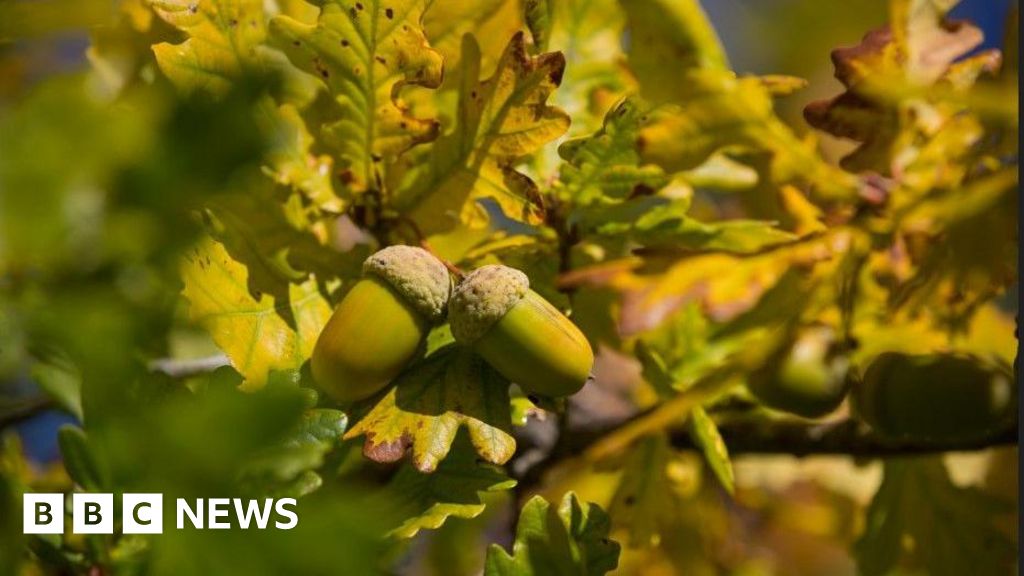Angela FergusonNorth West
 National Trust / James Dobson
National Trust / James DobsonWith signs of autumn now being seen across the country, a conservation charity has explained why there is such an abundance of acorns this year.
The National Trust said it was down to a phenomenon known as “mast year”.
Occurring around once every four years, it involves certain species of trees producing unusually high numbers of nuts and berries.
At Dunham Massey in Greater Manchester, head gardener Emily Chandler said the volume of acorns was “the largest we have ever seen”.
Dr Andrew Hacket Pain, from the University of Liverpool, said a mast year happened due to a combination of factors including the weather, with the warm and dry spring this year promoting the pollination of oak flowers.
Emily Chandler said the nuts were “carpeting the borders” at Dunham Massey, adding that one of their tenant farmers, who is in his 80s, had said it was the best apple harvest he had ever seen in his life.
“The berries and fruits are abundant across the garden,” she said.
Ms Chandler said Dunham Massey’s candyfloss trees – Cercidiphyllum japonicum – which needed moist conditions to thrive, were changing very early this year and “the smell of burnt sugar from their multicoloured leaves drifts across the garden”.
 National Trust / James Beck
National Trust / James BeckThere was also an increase in acorns at Gawthorpe Hall near Burnley, according to ranger David Bevis.
He said: “We have definitely seen a lot of acorns and probably more than I have seen in my time.
“Everything seems to have responded well to the increased temperatures this year.”
He said there had also been a bumper crop of apples at the site’s heritage orchard, where old English varieties of apples were grown.
 National Trust / Arnhel de Serra
National Trust / Arnhel de SerraMany National Trust gardeners and countryside managers reported that autumn had arrived swiftly, as though someone had “flicked a switch”, the charity said.
They said berries, acorns and fungi were already plentiful in gardens and the countryside – coming as a welcome boost for wildlife.
A National Trust spokesperson said autumn was also set to bring a glut of conkers and hedgerow fruit this year, after initial concerns over impacts from the hot summer and drought had been allayed.
The charity said it expected a long, colourful autumn display at many of its sites in the coming weeks because of the combination of recent plentiful sunshine and some late rainfall.
They said these conditions put the brakes on the start of a “false autumn” in some areas, which was when stress caused to plants by prolonged hot, dry conditions could prompt the premature shredding of leaves and early ripening of fruits.




